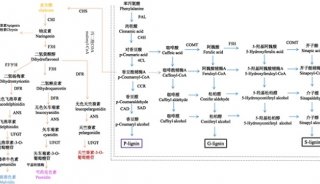Biosynthesis of neurotransmitters

Neurotransmitters are signaling molecules used by neurons to communicate across chemical synapses. The receptors for neurotransmitters include G-protein coupled receptors (GPCRs) and ligand-gated ion channels. The biogenic amines are neurotransmitters derived from amino acids, and include dopamine, epinephrine, GABA, histamine and serotonin. For each of these, decarboxylation of an amino acid is a key step. GABA, gamma-aminobutyric acid, is a key inhibitory neurotransmitter and is synthesized through the decarboxylation of glutamate in a single step. Glutamate is itself an abundant excitatory neurotransmitter. Histamine signals are involved in inflammation and acid secretion in the stomach, acting through GPCRs. Histamine is synthesized in a single step from the amino acid histidine through decarboxylation. Serotonin is a neurotransmitter with a large range of effects, including roles in mood and depression, and is synthesized by first adding a hydroxyl group to tryptophan, followed by decarboxylation. A common mechanism of antidepressant action is to block the reuptake of serotonin at synapses. Dopamine is involved in movement and mood and is derived from tyrosine through addition of a hydroxyl group and decarboxylation. Additional reactions create norepinephrine and epinephrine from dopamine. These molecules, also called adrenalin and noradrenalin, act on the adrenergic receptors to exert responses including alteration of blood pressure, heart rate, metabolic activity, and bronchodilation. Many common drugs such as asthma and heart pressure medications act on adrenergic receptors. Alterations in these biosynthetic pathways can lead to significant clinical consequences. For example, deficiency in tyrosine hydroxylase activity leads to a movement disorder similar to Parkinson's disease and may play a role in Parkinson's disease and the development of an autoimmune response against glutamate decarboxylase (GAD) may trigger the destruction of insulin-secreting cells and type I diabetes. Numerous studies have searched for a potential genetic role of tryptophan hydroxylase mutations in neuropsychiatric indications, with conflicting results.
Contributor: Glenn Croston, PhD






















